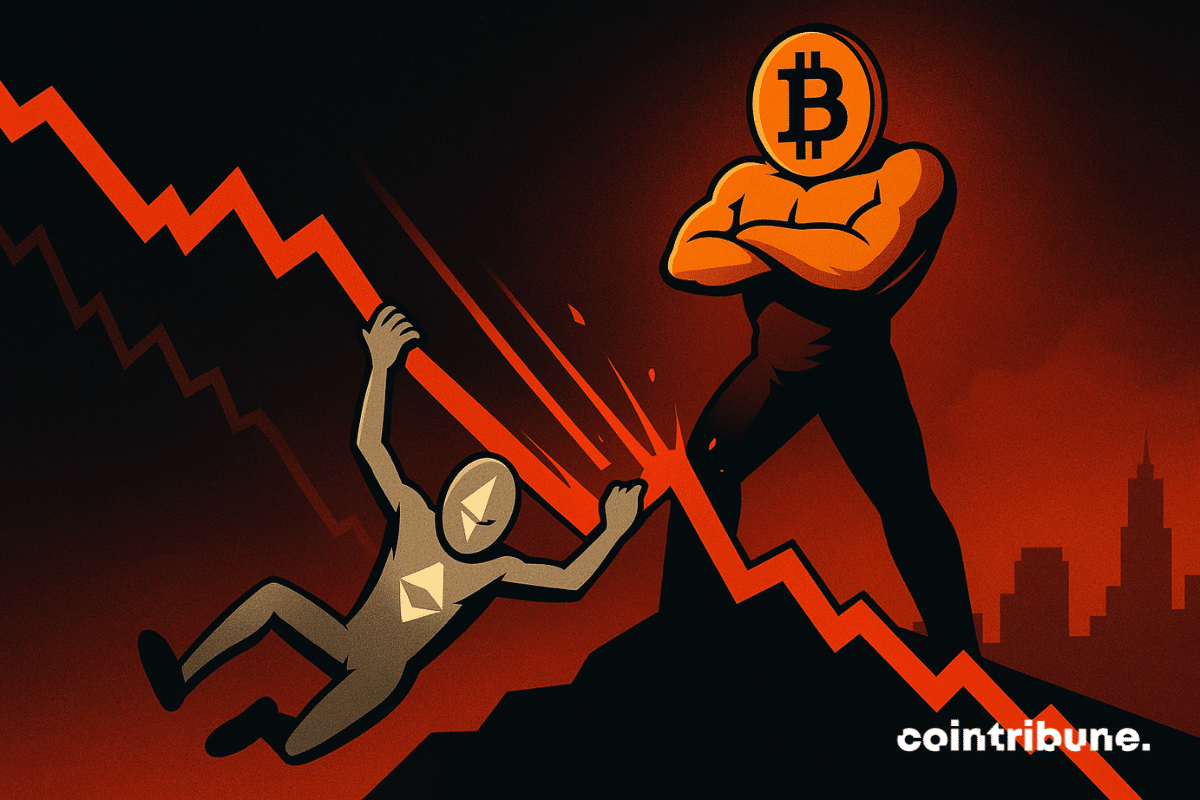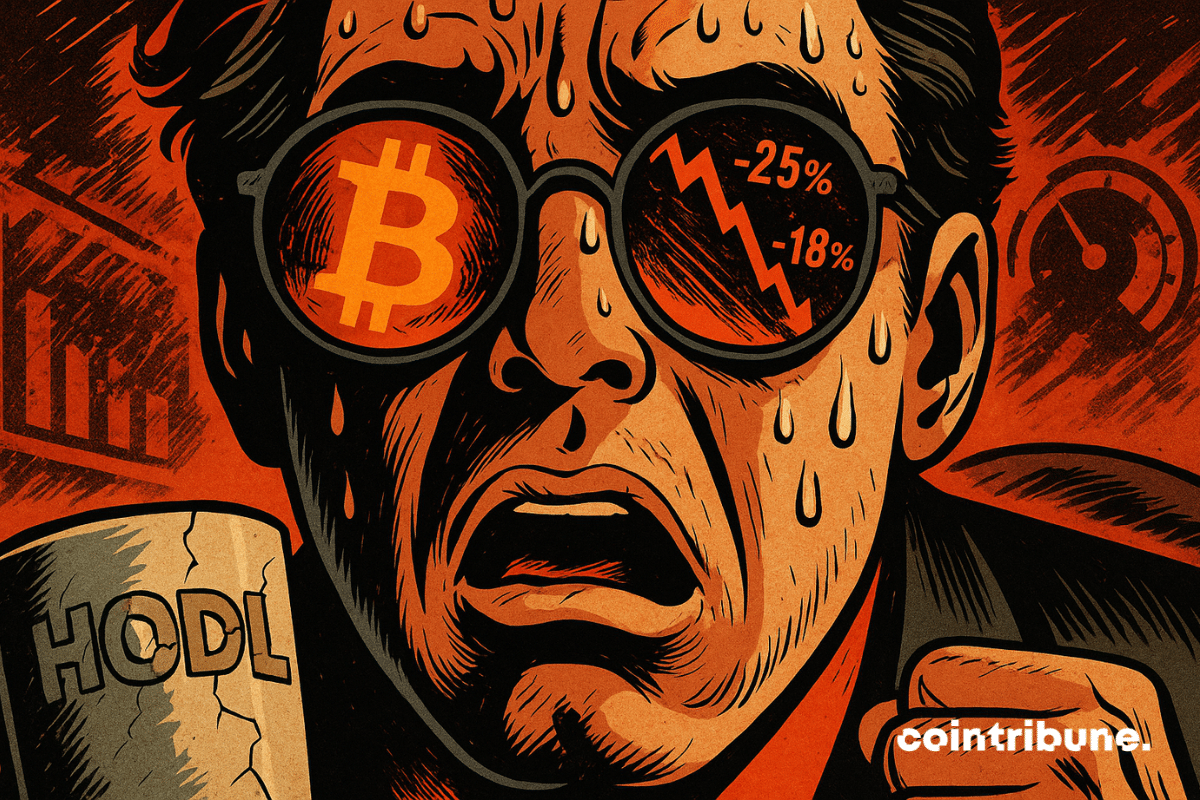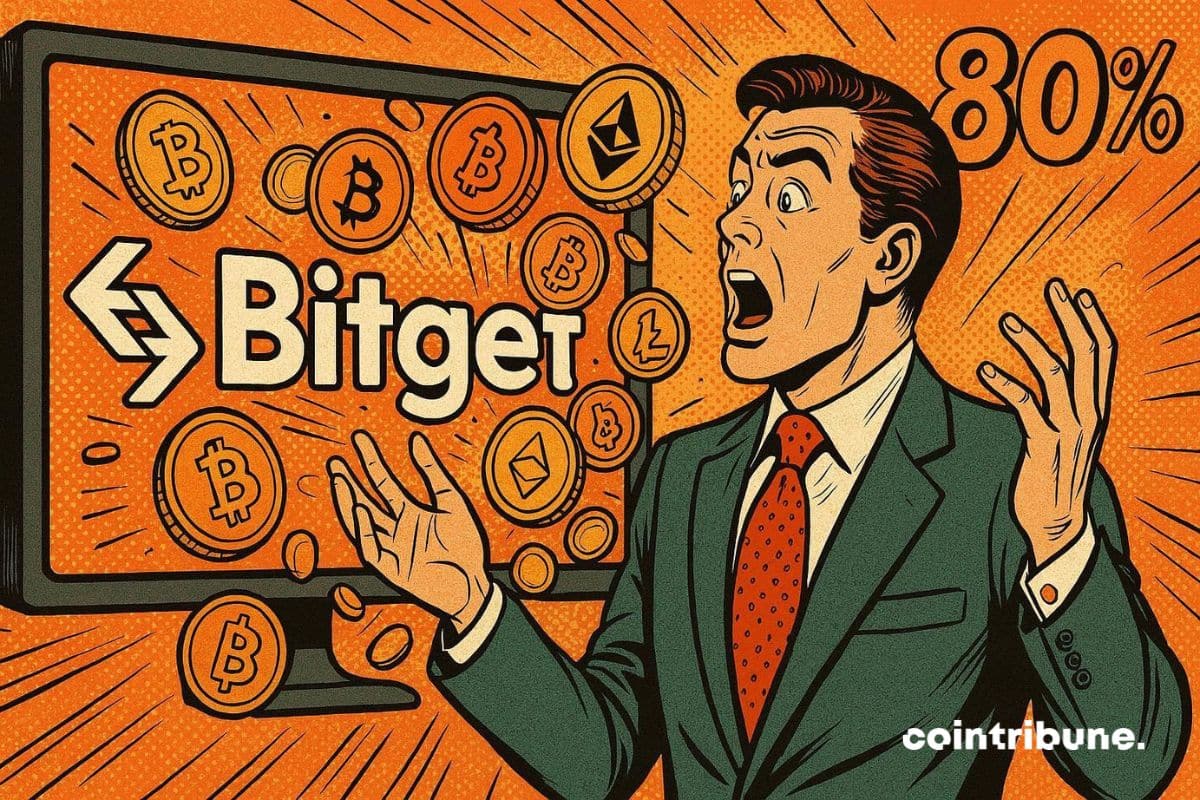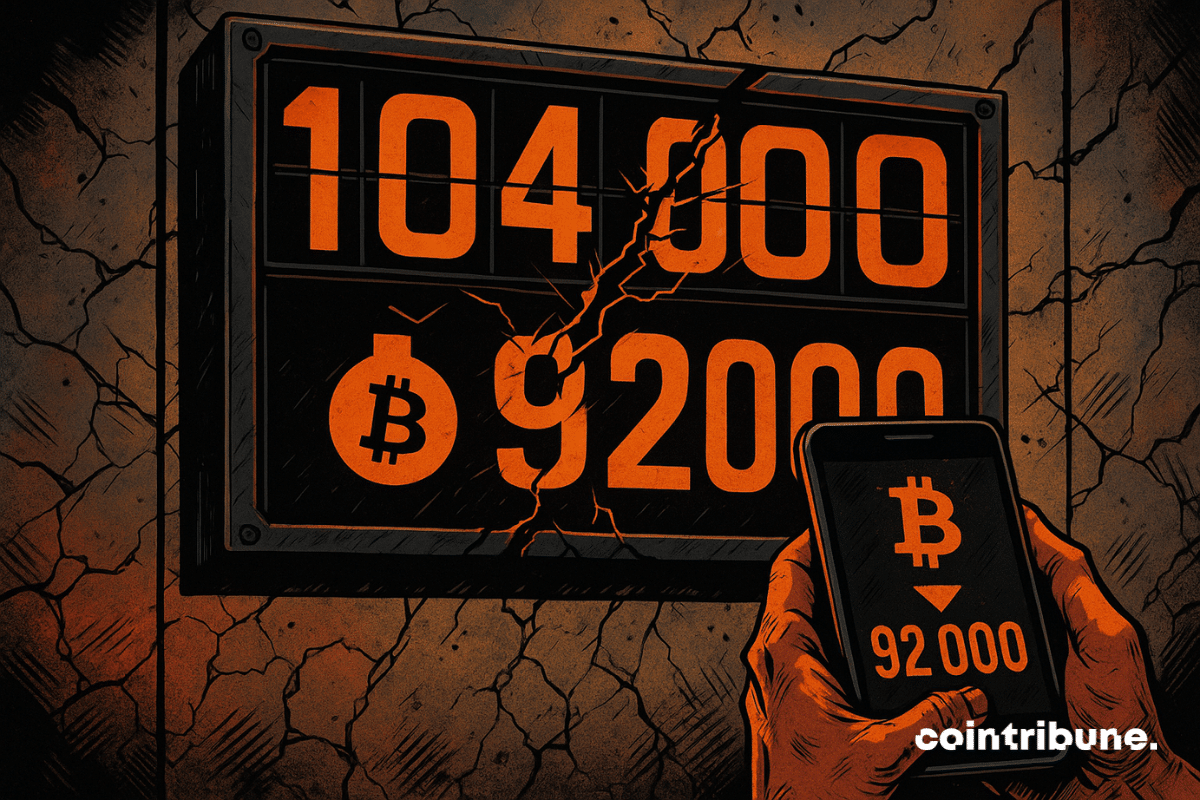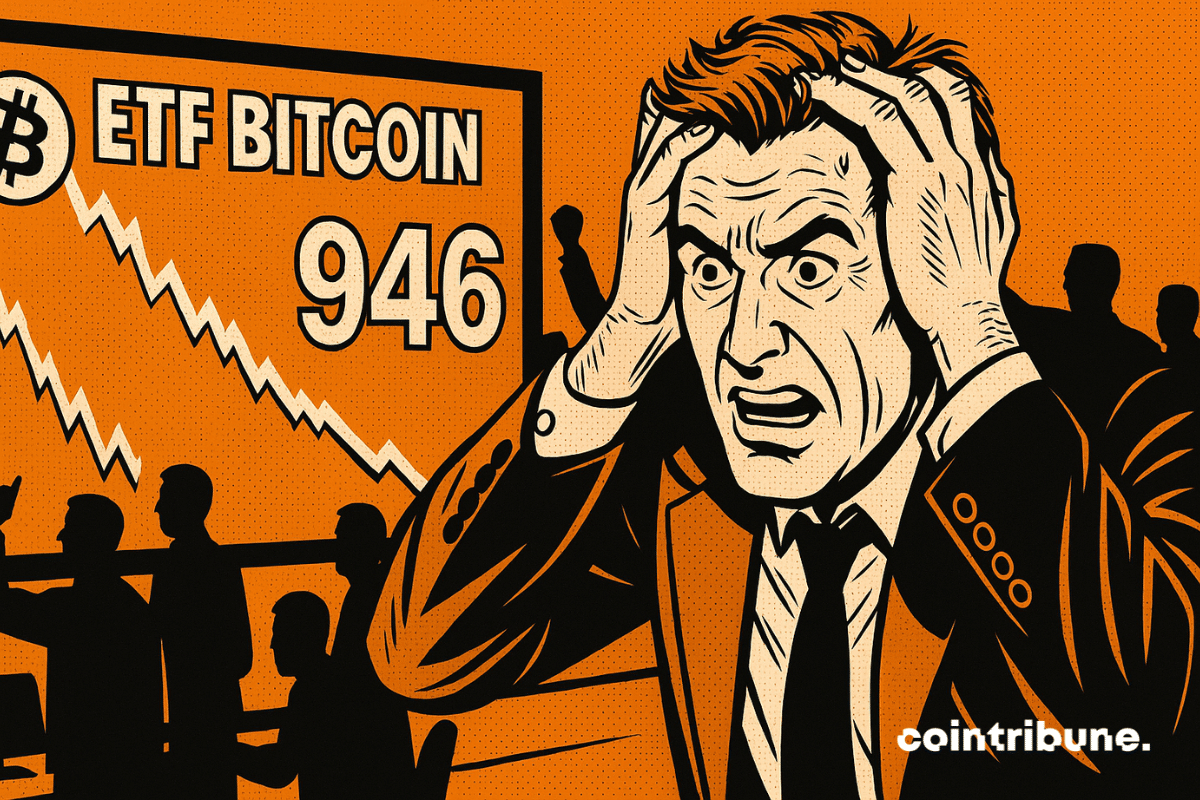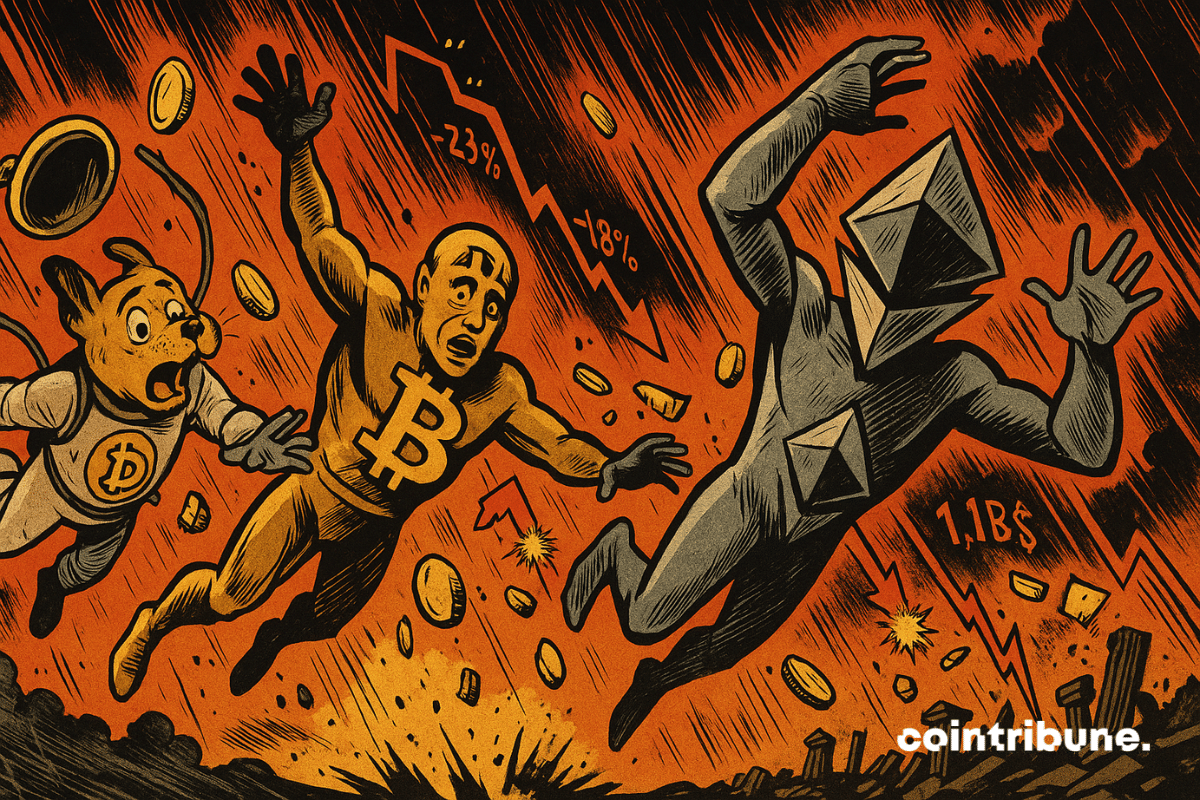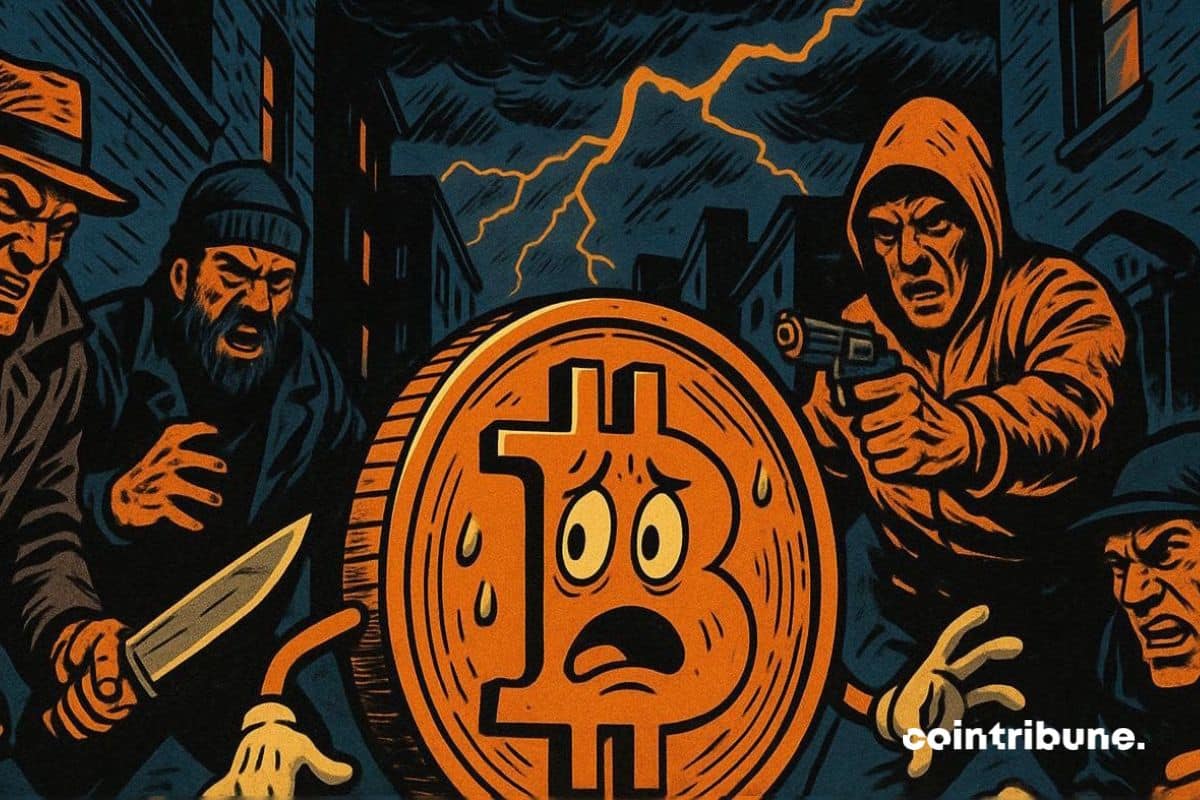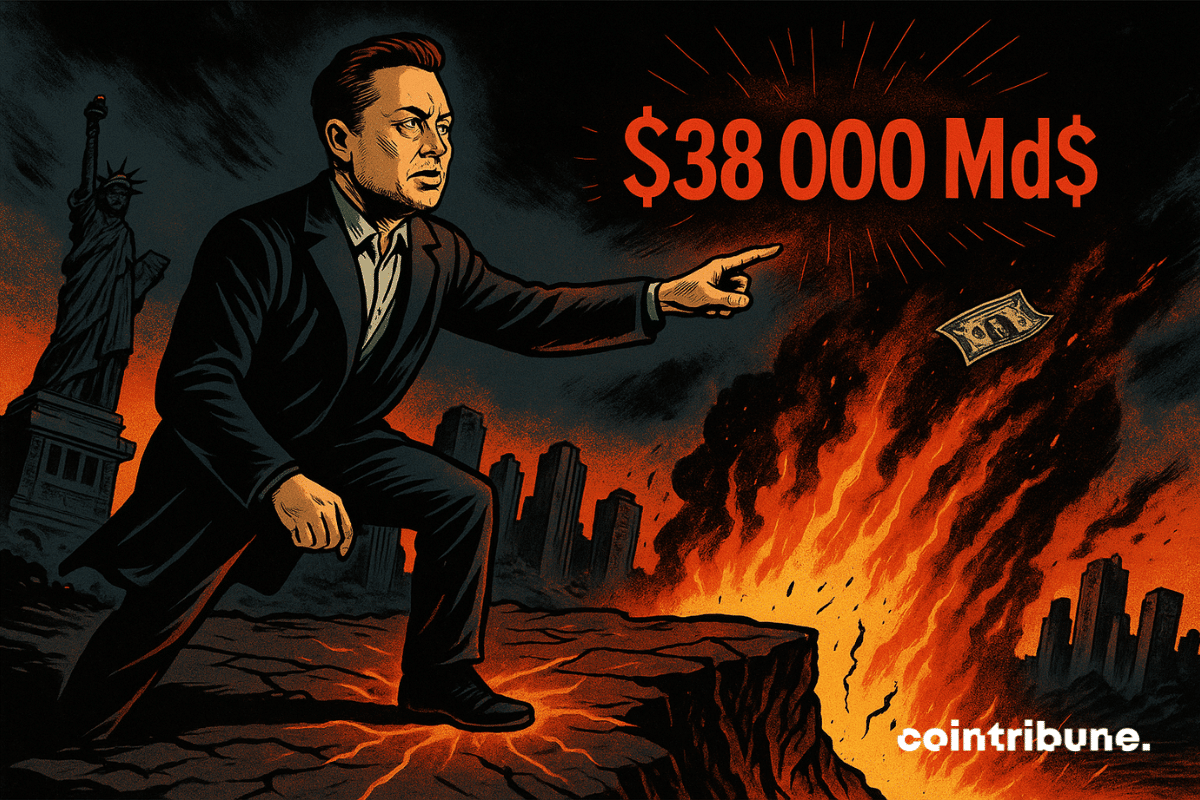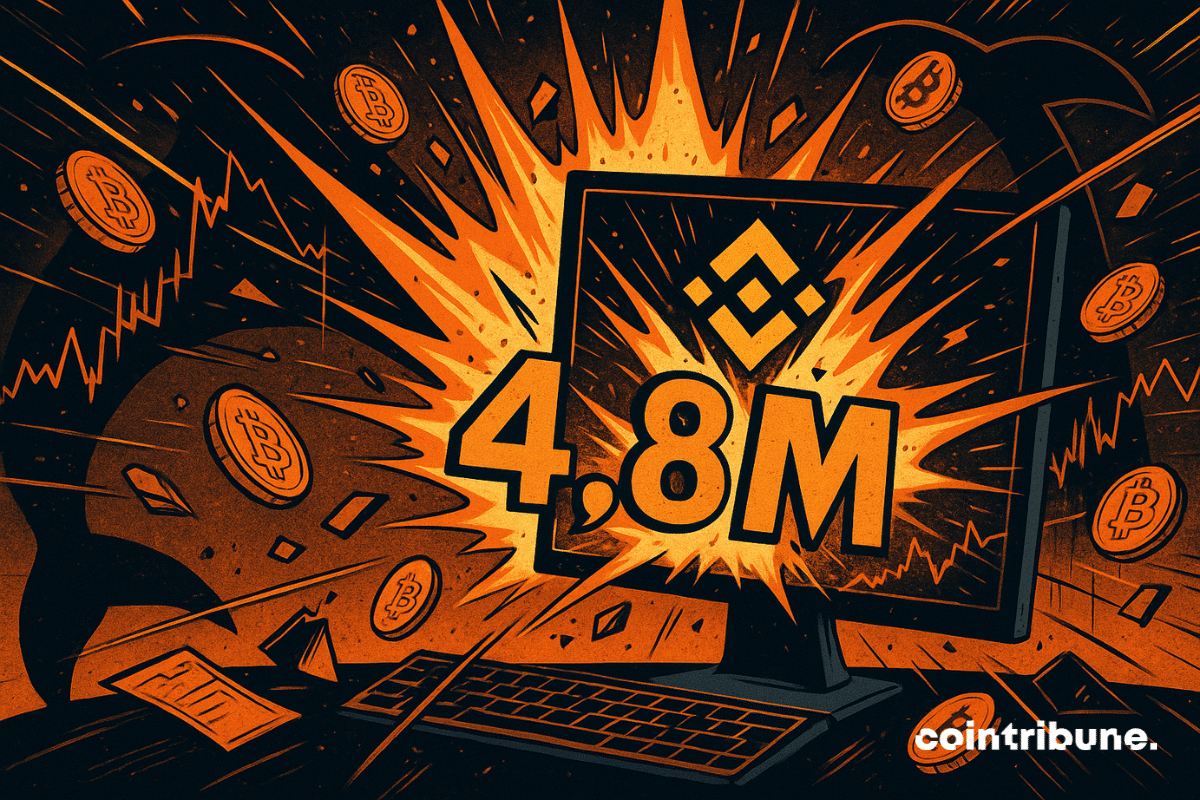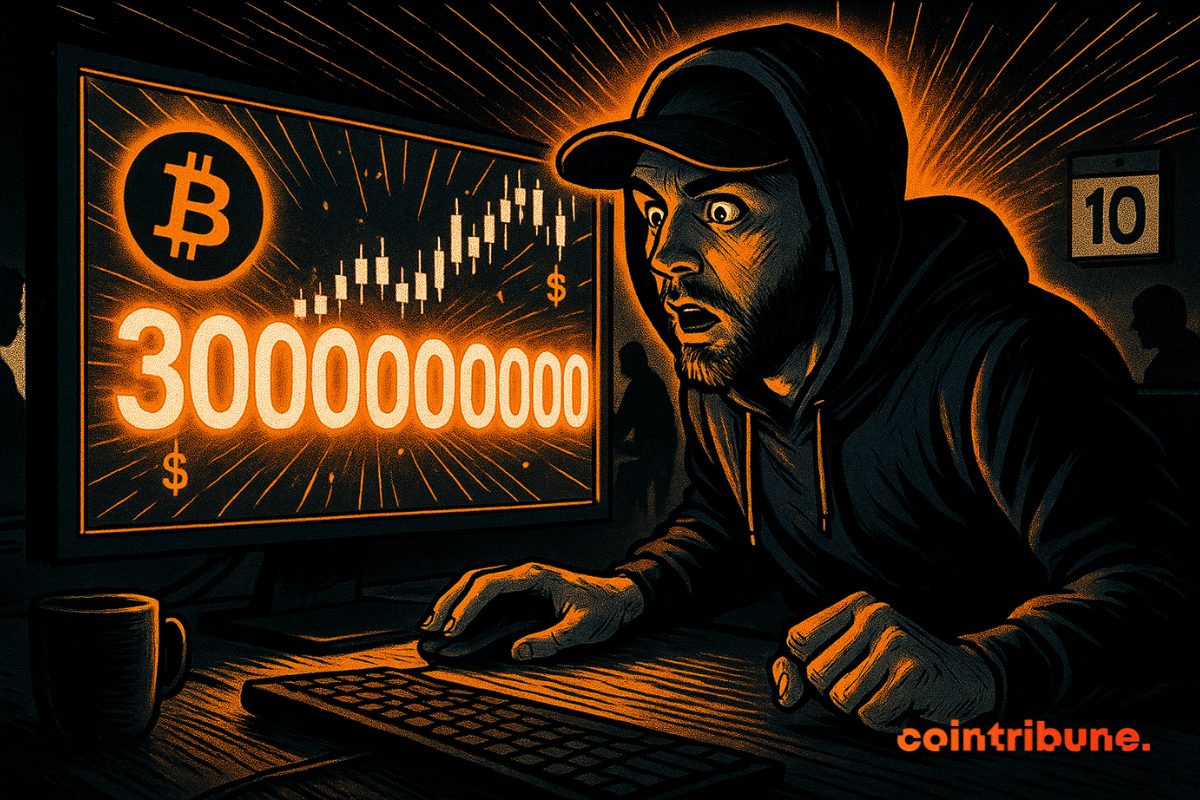Michael Saylor's aggressive Bitcoin accumulation strategy — could it survive the next bear market? Crypto analyst Willy Woo offers reassuring answers, supported by numbers. But a longer-term risk remains.
Theme Bitcoin (BTC)
The drop of bitcoin below 100,000 dollars has revived tensions in the market, shaking a symbolic threshold for investors. Behind this technical retreat are more complex signals. While some fear a lasting bearish trend, several influential voices in the sector see it as a transitional phase, carrying potential for a rebound. Between behavioral analysis and macroeconomic dynamics, this correction could mark much more than a simple temporary adjustment.
As the crypto market holds its breath, a note from 10x Research reignites the debate. Ethereum is now a good candidate for shorting. According to the firm, betting against ETH could provide effective coverage against the institutional rise of bitcoin. This strategic reading shakes up the hierarchy between the two main assets in the sector.
Sequans, bitcoin's friend just yesterday, quietly dumps 970 tokens: tactic or panic? Meanwhile, crypto markets are tying themselves in knots with their wallet.
The cryptocurrency market is experiencing a turbulent start to the quarter. While Bitcoin falters under the weight of massive capital outflows, Solana surprises by attracting an unprecedented institutional influx. A striking contrast that illustrates a possible turning point in the crypto market balance
Michael Saylor continues his obsession with bitcoin. His company Strategy has just filed a request for an IPO of a share denominated in euros, specially designed to raise funds and acquire even more BTC. Will this initiative be enough to revive a buying momentum that is showing signs of weakening?
Bitcoin has just fallen back below $100,000, reviving doubts about the strength of its upward trend. Behind this symbolic threshold lies a weakened market, caught between weakening demand and macroeconomic tensions. For CryptoQuant, the threat is clear. If this support does not hold, BTC could plunge to $72,000 within two months. A scenario that worries, as technical and fundamental signals turn red.
While traditional markets waver under the weight of macroeconomic uncertainties, the crypto ecosystem goes through an unprecedented turbulence zone. Bitcoin falls below $104,000, dragging all other assets along with it. However, this correction goes beyond the usual volatility. Investor sentiment collapses, switching from optimism to extreme fear in a few days. This sudden reversal marks a major trend break, which could well redefine the market balance in the short term.
Institutional traders have just reached a historic milestone: 80% of Bitget's volume now belongs to them. A revolution that redefines crypto markets, with record flows and unmatched liquidity. Why does this dominance change everything for investors?
Bitcoin slips, whales abandon, small holders capitulate... what if the famous $92,000 gap became the new stopover? Bearish mood guaranteed.
American Bitcoin ETFs experienced a massive outflow of capital last week. Institutional investors turned away after Jerome Powell dashed hopes of a rate cut in December. Contrary to this, Solana ETFs stand out with record inflows.
The crypto market experienced a sharp decline at the start of the week. While US stocks remained in the green, Bitcoin, Ethereum, and Dogecoin collapsed, triggering over $1.1 billion in liquidations within 24 hours. A sudden drop, without a clear catalyst, revealing the weaknesses of an ecosystem still unstable and vulnerable to panic movements. This massive setback rekindles doubts about the market's strength and investors’ resilience amid an ever unpredictable volatility.
Michael Saylor replenishes his Bitcoin treasury, but at a less frantic pace: simple strategy or market warning? Analysis.
Bitcoin falters in November 2025: between technical drops, investor withdrawals, and macroeconomic tensions, the crypto defies its historical trends. Why does this "cautious calm" hide major risks? Exclusive analysis of the 5 signals to watch to anticipate the next wave of volatility.
Tom Lee, an iconic figure of crypto optimism, just unveiled a projection that is a bombshell in the ecosystem. According to him, Bitcoin could reach between 1.6 and 2 million dollars by 2030. But that's not all: he even mentions a 3 million scenario. How does he justify such ambition?
Facing a debt considered "unsustainable", the Tesla CEO warns: the United States is heading towards a budget wall. In a discussion with Joe Rogan, he denounces an economic trajectory that has become, in his view, "dead end". For some, this looming crisis could propel bitcoin to new heights. The asset, historically linked to distrust of the dollar, could strengthen thanks to this announced crisis.
In seven days, the asset's realized capitalization jumped by 8 billion dollars, marking a spike in on-chain activity rarely seen outside periods of extreme tension. This indicator, which measures investments actually committed, suggests a possible bullish return. Yet, despite this structural effervescence, the spot price of bitcoin remains frozen. A dissonance arises between internal network movement and the inertia of external flows.
Bitcoin and Ethereum are subject to massive withdrawals of several billion dollars from exchanges, a rare phenomenon that intrigues investors. While gold collapses, these cryptos resist. Is it a sign of a historic rebound or mere caution? Dive into the on-chain data analysis and trends that could change everything.
Trump shakes hands with Xi, crypto traders hold their breath. Historic agreement, systematic mistrust: the tariff truce amuses the stock market, but Bitcoin still sulks.
While the small fry are stirring, crypto whales quietly pile up BTC on Binance... What if the real maneuvers are unfolding in the silence of order books?
Musk, the man who sleeps less than an Ethereum server, attacks WhatsApp with X Chat, encrypted messaging Bitcoin-style. Advertisers and GAFAM, hide your hooks, it's going to encrypt hard!
Bitcoin just experienced a red October, a first since 2018. November, historically a bullish month for BTC, could it change everything? Between hoped-for rebound and risks of decline, here is what experts predict and strategies to adopt to not miss the movement.
Seventeen years after the publication of the white paper by Satoshi Nakamoto, bitcoin is no longer a niche bet. It is a global asset worth 2 trillion dollars. Yet, on this October 31, the market turns the page on a thwarted "Uptober." October closes in red for the first time since 2018. A signal to be read carefully, without melodrama.
The Basel Committee's rules on cryptocurrencies could change the game in 2026. Between bank adoption of stablecoins and crypto integration, a financial revolution is underway. Are banks ready to take the leap? The answer could change everything for your investments.
In October, the Bitcoin market confirmed its vitality despite a sharp price correction. Spot volume exceeded 300 billion dollars, a sign of a return to "cash" trading and a reduction in leverage usage. According to CryptoQuant, this dynamic reflects a healthier market, capable of withstanding volatility without a sudden collapse. In short, despite the drop in BTC, investors, whether retail or institutional, show renewed confidence in the spot market, marking a structural evolution of the market towards greater stability.
Bitcoin has once again shaken the market—dropping over 10% in just a few hours, dragging Ethereum and the entire market into a whirlwind of panic. Traders held their breath, and the age-old question echoed loudly once again:
In 2025, crypto breaks all records: entrepreneurs become billionaires in a few months thanks to spectacular fundraising and bold secondary sales. But behind these express fortunes hide major risks and burning questions. Who will withstand the test of time? Dive into the behind-the-scenes of this digital gold rush.
The crypto market, already known for its volatility, has just experienced another major shock. In just 24 hours, over $1.1 billion has been liquidated, revealing the ecosystem's fragility against increasingly influential macroeconomic forces. The fluctuations of bitcoin and altcoins have not escaped investors' attention, who saw their positions swept away by this wave of liquidations, increasing the risks associated with this uncertain market.
Michael Saylor sees bitcoin soaring to the skies, Wall Street is converting... What if the crypto guru was still right despite geopolitical turbulence?
Rising debt levels and growing concerns over financial stability are driving investors toward crypto and gold as safe-haven assets. BlackRock CEO Larry Fink described this shift as a response to mounting fears about government debt and the declining value of money.


